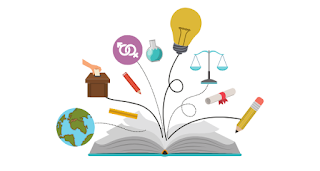Pakistani Education
The following writing is a reflection on a video conference call arranged between myself and a female peer from Lahore, Pakistan. We primarily discussed education in our respective homelands.
In the midst of my standardized test preparation, I was surprised to hear of the mandatory SATs Pakistani high schoolers take in their senior year. The ACT, the SAT, the ISEE all seemed like such Western bureaucracy, misplaced in a country that struggles with primary school education. It was at this point in my conversation with Iman that I realized I had approached our time together as I would expect most Americans to: I anticipated Iman’s discussion of Pakistan’s low literacy rate and modest enrollment with little regard to this American hypocrisy. While the United States boasts ascendancy, 32 million Americans are illiterate and 1.2 million American high school students drop out each year. It is all too American to critique and lament the shortcomings of other nations, particularly those still developing, while ignoring domestic issues and falsifying supremacy.
Iman and I are both the exceptions in our respective homelands. Like Iman, I attend a private school with well-trained teachers and an emphasis on our futures. We both play the piano, participate in club gatherings, and study Shakespeare. The two of us have high hopes for ourselves; we expect to pursue at least a tertiary education and go on to work fulfilling jobs, start families, run businesses; the list goes on. For the millions of teenagers without their high school diplomas in America and in Pakistan, however, life can be constricting, and the list may stop short. Government corruption and a lack of investment in education seem a mutual influence. In both countries, childhood education is required by federal law, yet a lack of state schools and severe underfunding undermine such legislation and isolate quality education to the rich neighborhoods of Lahore, Islamabad, Southern California, and New England, thereby perpetuating a growing class divide. The education systems of Pakistan and the United States, seperated by East and West, third world and first world, are joined in their mutual need of drastic reform.
With my point being made, it is also only logical to recognize the great differences between Pakastani and American dialogue around education, access to schooling, and even female existence. In this country, white females are nearly as likely to complete the same level of education as their male counterparts in the same socioeconomic demographic. In my schooling, I will likely not be pressed to choose marriage instead. The American freedom granted to my own demographic is one Pakistan cannot afford Iman. Devestating child labor keep millions of primary aged Pakastani children out of school each day. Gendered prioritization of young boys’ education prevents female autonomy and professionalism. The United States allocates 7.3% of its GDP to education, while Pakistan spends only 2.4% on schools. There are inhibiting variations in state wide access and cultural precedents, particularly for lower-income and female students in Pakistan, yet with a multiple of the Pakistani education budget in hand and “freedom” at the core of America’s dogma, the shortcomings of American education makes it difficult to believe that mine is a country committed to equal opportunity in schools and out.
Iman and I spoke for nearly an hour on Pakistani and American education in English. Our conversation ranged from what literature our English classes have had in common to what selective colleges we hope to attend to what our standardized testing preparation will look like. Though everday and mindless to us, the brand of education Iman and I subscribe, the kind focuses on cultivating the invidual, analyzing 17th century scripts, and recognizing the importance of playing a musical instrument, is not the education granted to millions of equally deserving peers across my country and across hers. Iman’s perfect English, in particular, has given her the opportunity to interact with a teen-run online magazine based in New York City. What we have, and appreciate, is an education so far removed from what is traditonal - or state run. I had a great time speaking with Iman and recognize the insight we both shared, but it is clear we are both, to some degree, incapable of offering all the details, the big picture. I look forward to filling in the holes in our stories.



Comments
Post a Comment